with solution and answers | Ray Optics | Physics - Conceptual Questions | 12th Physics : UNIT 6 : Ray Optics
Chapter: 12th Physics : UNIT 6 : Ray Optics
Conceptual Questions
Conceptual Questions
1. Why are dish antennas curved?
In
a dish antenna the curved surface act as a concave
mirror. A receiver is placed at the focus
of the curved surface.
All the signals which fall on it can be reflected to that receiver.
Thereby the strength of signal received is maximum. So the dish antennas are
curved.
2. What type of lens is formed by a bubble inside water?
When
a ray of light strikes a bubble in water, light ray passes from denser medium
(water) to rarer medium (air), it bends
away from normal. And again at the other end the light ray will enter from
rarer (air) to denser (water), and it bends
towards the normal.
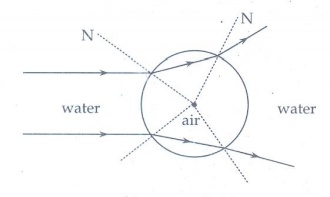
Thus,
the bubble inside the water act as a concave
(diverging) lens.
3. It is possible for two lenses to produce zero power?
Yes,
It is possible, If one lens is converging
lens with some focal length, so power P1 = P. And other lens is diverging lens with same focal length
but negative, so power P2 = -P, then the combination of these two
lenses will be zero.
4.
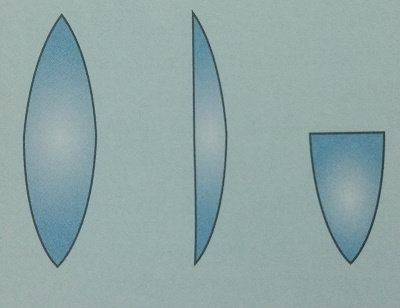
Case-1:
For
convex lens
1/f =
(n-1) (1/R1- 1/R2)
If
the radius of curvature is equal. Then R1 = R , R2 = -R
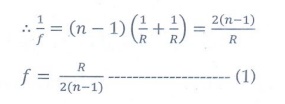
Intensity
is directly proportional to the area of the aperture of the lens receiving the
light.
I
∝ A
Total
area of the aperture is A = π(d/2)2 = πd2 / 4
d
is the diameter of the aperture.
Case-2:
When
cut vertically, R1 = R , R2 = ∞
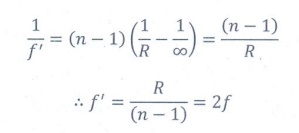
When
cut vertically, the focal length is doubled.
In
this case, the diameter of the aperature remains same. Therefore the intensity
also remains same. I' = I
Case-3:
When
cut horizontally, the radius of curvatures remains same. Therefore the focal
length also remains same.
f ' = f
In
this case, the diameter of the aperature becomes half.
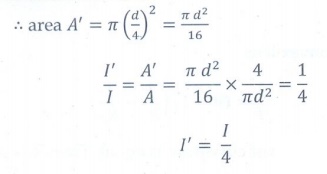
∴ The intensity reduce 1/4 times
5. Why is yellow light preferred to during fog?
During
fog, it is hard to see from naked eyes. So we use lights in the vehicles.
The
fog lights to be single colour, because the different wavelengths of visible
light scattered by the fog droplets differently. This is called dispersion.
Due
to dispersion, the visibility will decreases for the drivers. So we should use
single colour (yellow) light in fog.
The
yellow colour has a longer wavelength. So the Rayleigh scattering by the fog is
less. Thereby the visibility will increases.
Thus to reduce the dispersion and Rayleigh scattering, we use yellow lights in the vehicles. Thereby we will increase the visibility for the drivers.
Related Topics